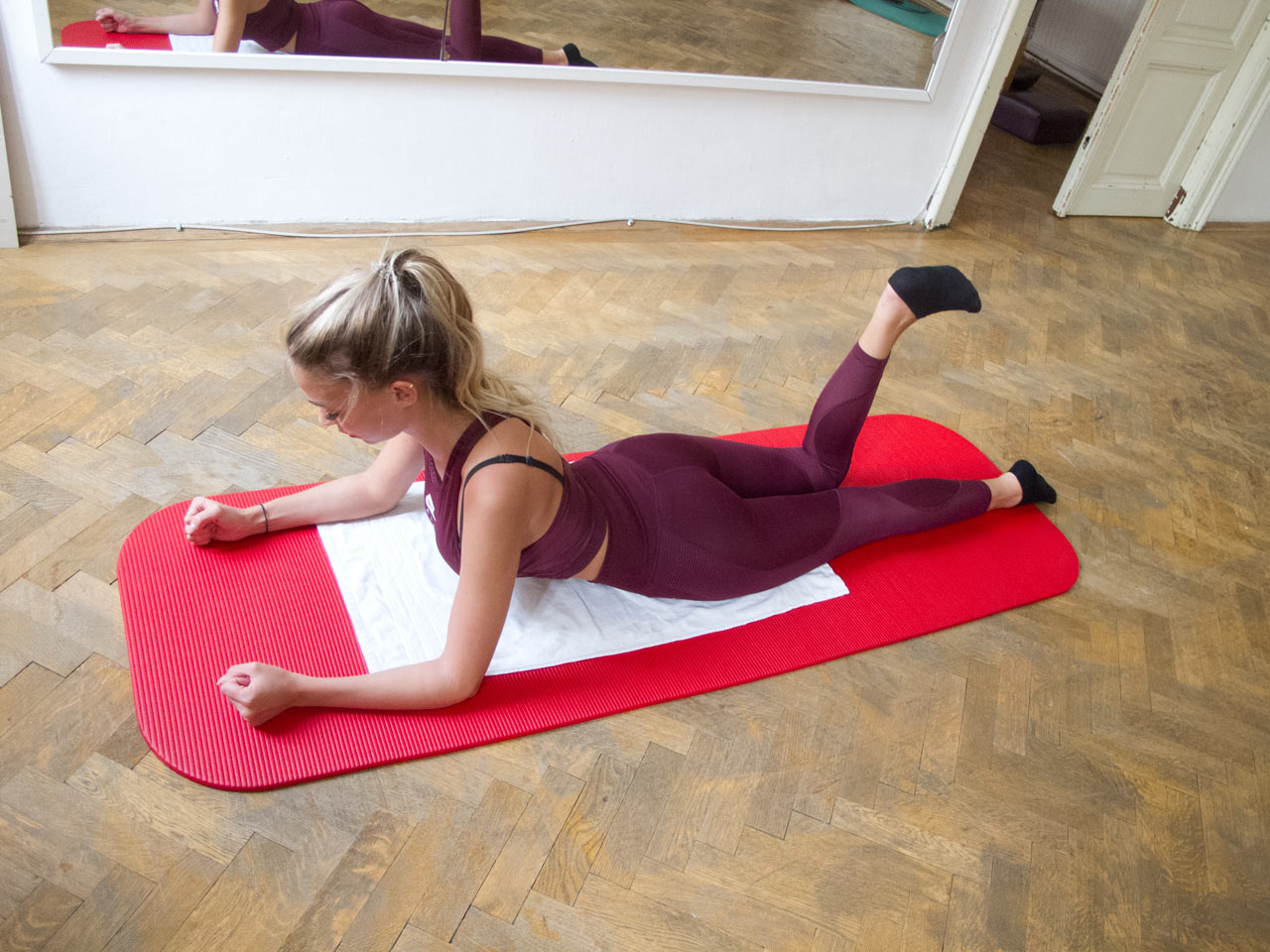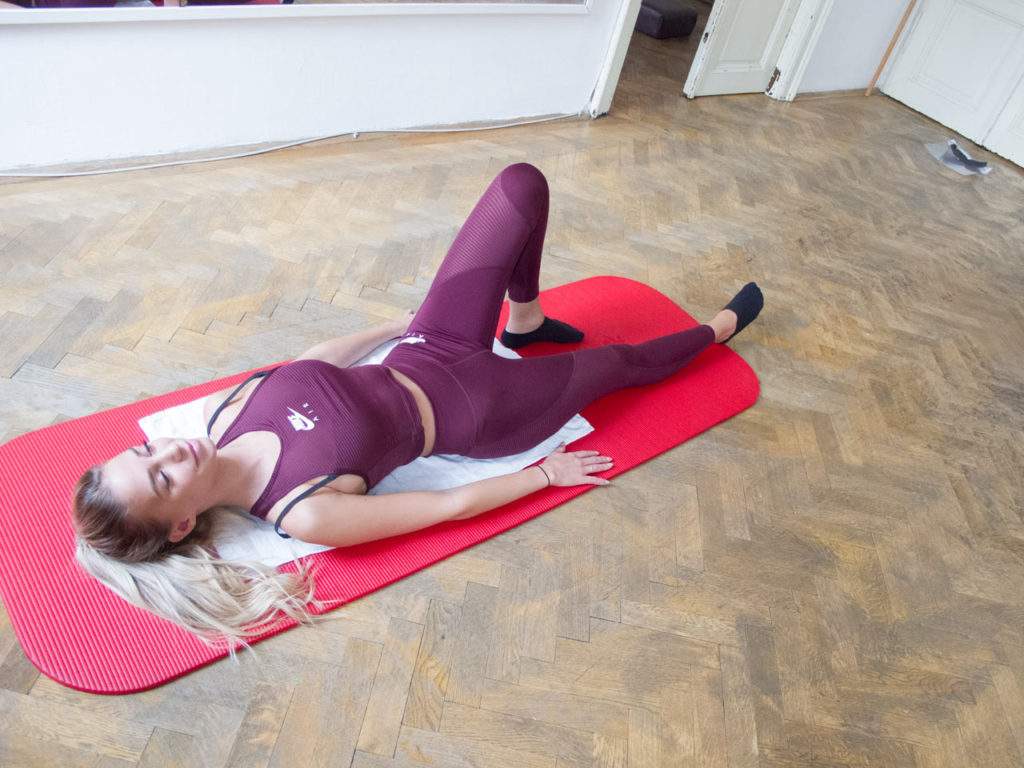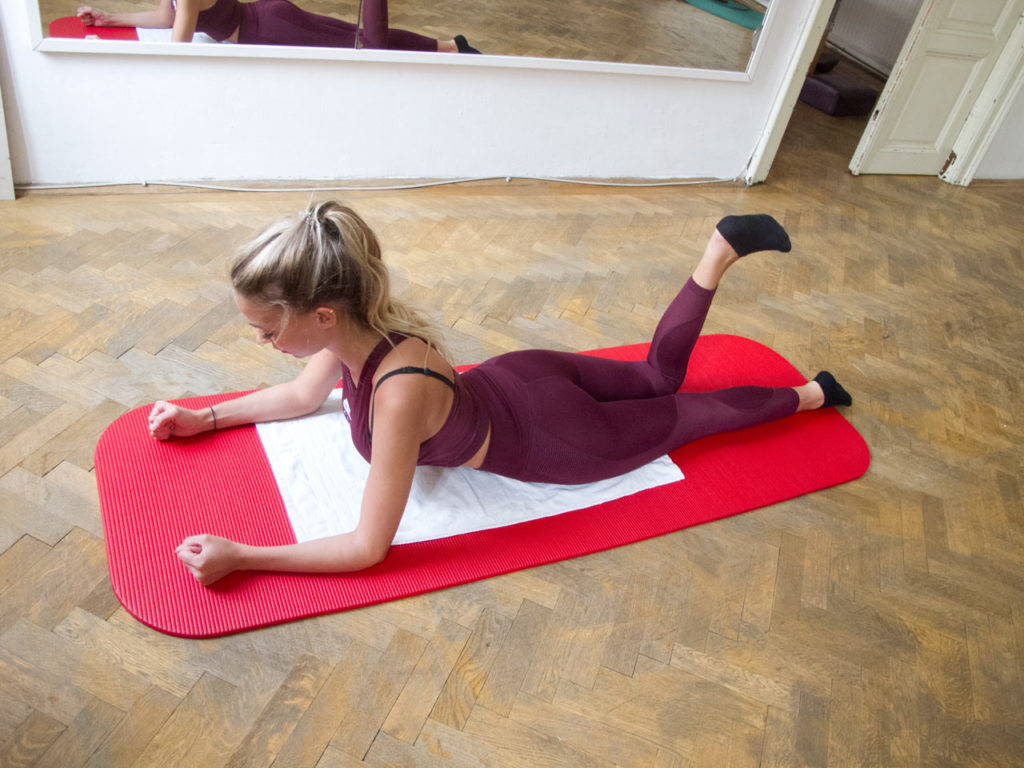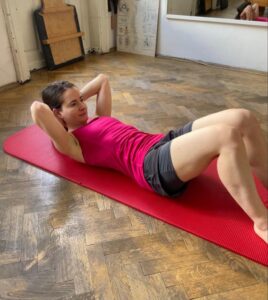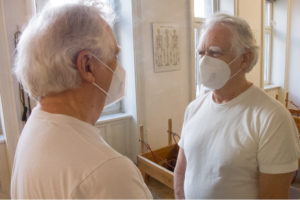Imagine there was a learning tool that could bypass all the Pilates dogmas and theories that tell us how to do prone Pilates exercises. That would be pretty cool, wouldn’t it! Believe it or not. There is such a perceptual tool: the pelvic side roll weight distribution tool.
For a better perceptual understanding of prone Pilates exercises such as the Single Leg Kick, Double Leg Kick and Swan Dive try our perception tool – the Pelvic Side Roll Weight Distribution.
Grounding our pelvis in prone position functionally
The biggest challenge for Pilates novices when performing the Single Leg Kick is keeping the pelvis grounded down into the floor. We see this in Pilates classes all over the world. It is a real challenge to keep the pelvis grounded while kicking the heel towards the buttocks.
This challenge can hardly be mastered if we have NO kinaesthetic perception of how we lengthen our working thigh. How do we lengthen our working thigh? By “correctly” activating our gluteal muscles. Now, what is the correct activation of the gluteal muscles?
Quite simply, when we activate the gluteal muscles correctly, we activate our gluteal muscles without shortening our lower back. The problem is that when the lower back shortens, our pelvis will inevitably tilt forward (anterior pelvic tilt). Our pelvis is then not in a functional-neutral pelvic position. However, this is the position you want: a functional neutral pelvic position!
In the functional neutral pelvic position our pelvis is slightly posteriorly tilted, initiated by our power engine – our powerhouse – and not our lower back. With our pelvic weight distribution learning tool you achieve the functional neutral pelvic position with minimal effort because you will reflexively activate your glutes – full Power without Force!
Enough talking, let’s get down to the nitty-gritty and learn to understand this little gem from all sides. We will exemplify it with the Pilates Single Leg Kick exercise. Click on the video below, watch our vlog and learn.
What you will find in the video?
0:15 – Learning tool description – Which muscles and bones are involved and how?
2:15 – 3 necessary functions for the successful execution.
3:45 – Execution of the Single Leg Kick.
Now to you …
Starting position
Lie down on your back on the floor. Your legs are extended and your arms are at your sides along the body. Bend your right knee and bring your pelvis into a neutral position.
The procedure
Phase 1: Activate your deep muscle corset system – your powerhouse – together with your right gluteal muscle and roll your pelvis towards 3 o’clock. In this position bring your attention to your right foot and observe how it presses into the floor. At the same time, notice your left posterior hip bone (the PSIS), which is also grounding downwards. Then bring your attention to your right front hip bone (the ASIS), which in contrast lifts upwards. Roll your pelvis back to the starting position and repeat the same process on the other side. Roll your pelvis to 9 o’clock.
Be mindful not to use your lower back and chest when rolling instead of your power engine and gluteal muscles. This is a very essential detail!
Phase 2: We continue to roll. We start as before and roll our pelvis to 3 o’clock – using our power engine – our powerhouse – and right gluteus. Now we gradually include the upper body, pelvis and head. Slowly and gently we roll further to the left and place the right hand on the floor.
Let’s stop here and explain the magic behind our perception tool before we do the Single Leg Kick.
Magic for our glutes and lower back
The way we usually do the Pilates Single Leg Kick, it is quite difficult to have a correct kinaesthetic awareness of 3 extremely important functions that are necessary for the success of the Single Leg Kick. To be precise, the lack of these 3 functions leads to the incorrect use of our glutes and lower back. Yes, that’s right, it shortens our lower back.
What are these 3 essential functions that our perception tool activates as if by magic?
- Grounding
- Reflexive lifting and
- Axial extension.
These 3 functions are essential for our success in the Pilates Single Leg Kick. However, they are not experienced separately but as a cohesive whole.
So, what does the pelvic side roll weight distribution tool do for the Side Leg Kick?
Grounding – lengthening – lifting
Firstly, the pelvic roll causes our pelvis to open and ground by means of the pubic bone. If we go straight into prone, this is difficult to replicate. Secondly, our perceptual tool reflexively lengthens and raises our upper body. It prevents sinking in the lower back. This is noticeably important for the Pilates Single Leg Kick and all other prone Pilates exercises, such as the Double Leg Kick, Swan or Swan Dive.
“Perception is the new reality!” But, of course, you can’t use our perception tool every time before the Pilates Single Leg Kick … but maybe you try it every now and then, notice the difference and at some point keep it. Make it yours! 🙂
Try it & fly with it!
Did you like our blog post? Then kindly support us and share it on social media sites like Facebook, Twitter, group forums, blogs and – all the retro way – personally among friends. We also highly appreciate your feedback on our exercises and posts.
